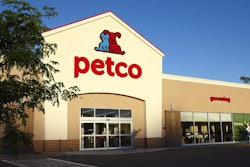
Recently, the Argentinian-based company Ensol and its pet food division Ensolpet organized a pet food seminar in the city of Pilar, just miles north of Buenos Aires. The forum and the speaking lineup were impressive.
It is noteworthy that, despite the deep economic plunge, Argentina and its pet food market are sticking out against the recession. According to one local expert, it is a matter of time and political agreement to reset the economy in an upward trend.
Regarding the pet food industry, one of the crucial topics in the discussion was the so-called humanization trend and its meaning for the pet food industry. One of the questions addressed to the audience was whether this humanization means increasing sales of pet food or a recomposition of the current product portfolio.
At least in Latin America, humanization means to fully recognize pets' needs to provide them with a better life. So, it is likely that such a trend impacts both pet food volume sales and innovation in the pet food industry.
Furthermore, current and future opportunities in the region depend on how deep humanization permeates into the marketplace, along with favorable demographic trends and disposable income.
For example, Argentina, one of the biggest pet-loving countries in the world, also has a rather favorable demographic situation, suggesting that commercial pet food purchasing in this country is likely to rise steadily in the coming years due to the large number of households with just one or two members. Moreover, the population pyramid signals a future demographic bonus.
The region needs to benefit from research
However, to take advantage of new local opportunities, it is key to unfold the range of available market niches. To do so, the pet food industry must make informed decisions based on market research to support them.
For example, the United States is shaping most of the trends within the global pet food arena. From a market standpoint of view, one primary reason supporting the large rate of innovation in the U.S. is the continuous research that manufacturers perform, as well as the use of consumer feedback that reinforces product innovation.
On the other hand, most pet food producers in Latin America avoid market research, perhaps thinking it is a costly activity that does not pay off. For various local companies, basing decisions on little market information has worked out well in the past, as producers mainly relied on pricing strategies to compete.
As the pet food market is becoming more competitive and sophisticated, with better-informed consumers, a deeper understanding of the local trends and pet food purchasers will be required to succeed in the local market.















